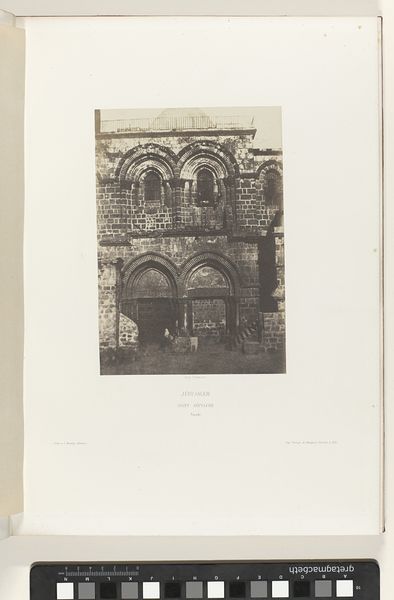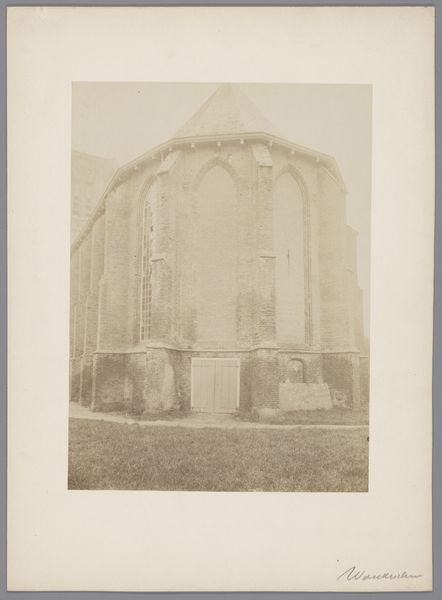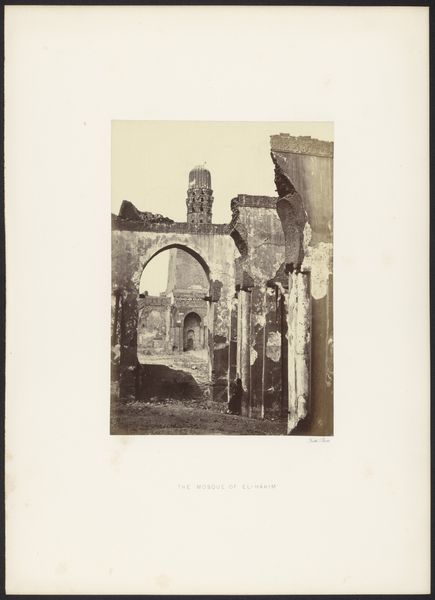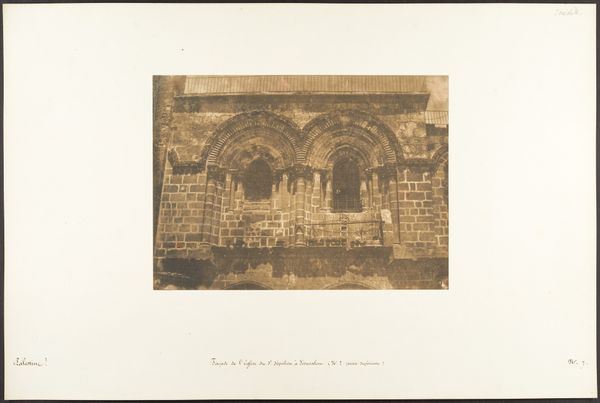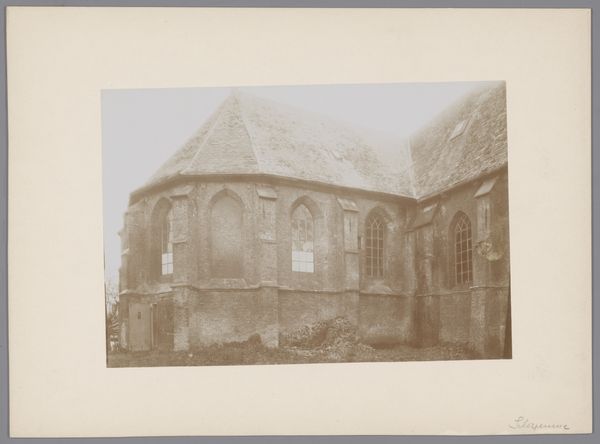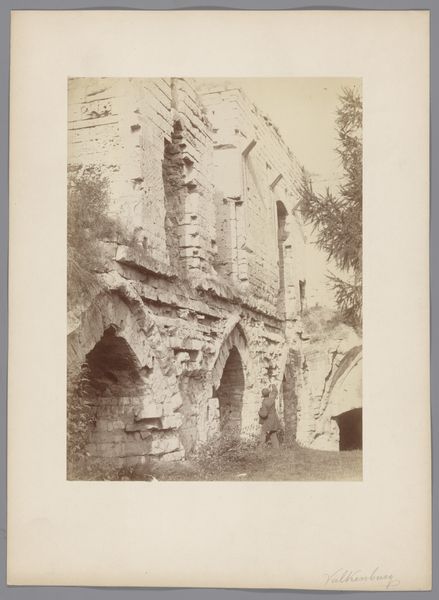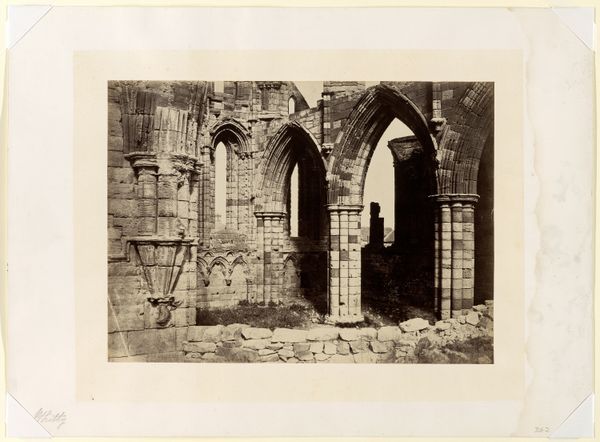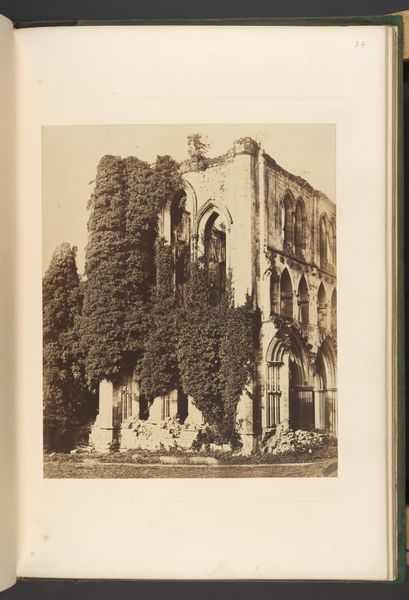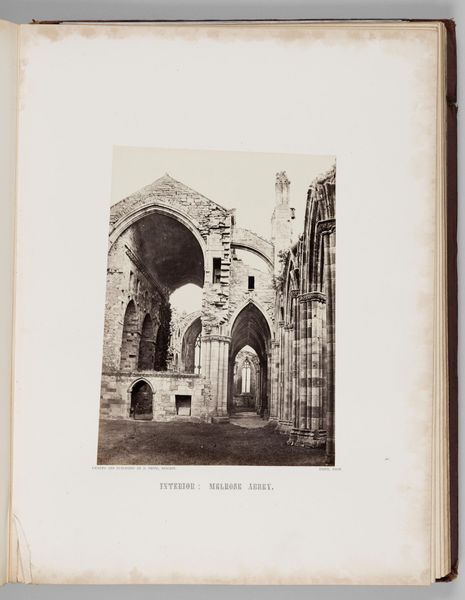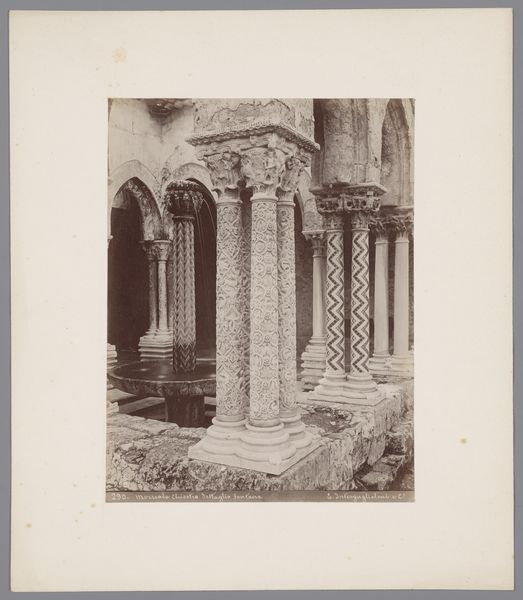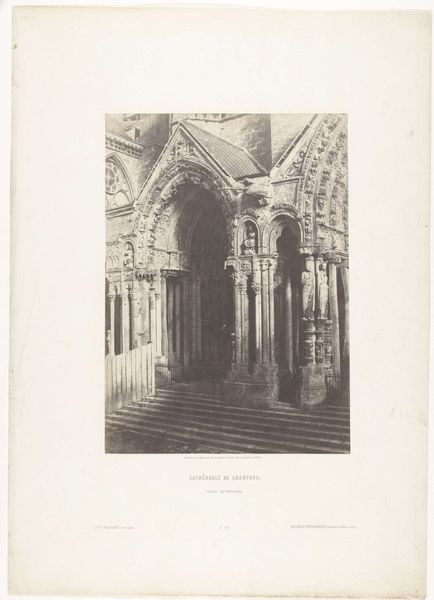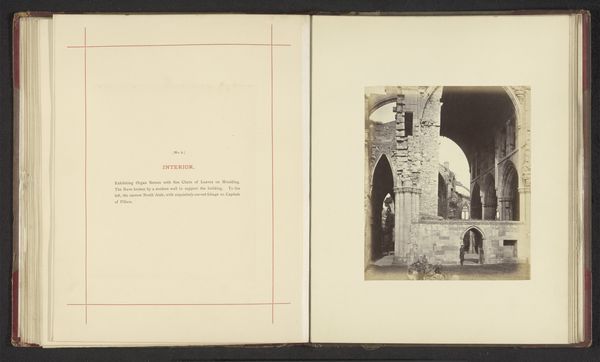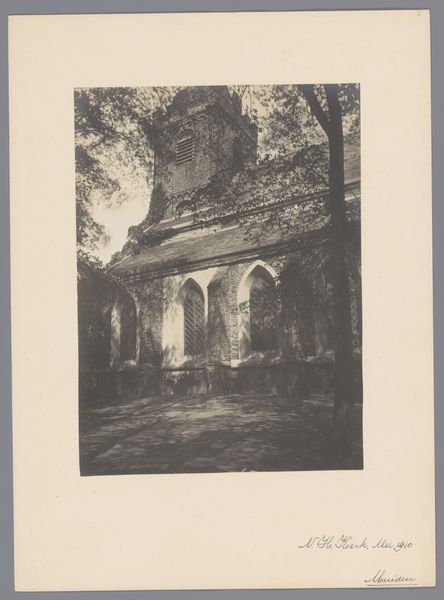
photography, gelatin-silver-print, architecture
#
landscape
#
photography
#
ancient-mediterranean
#
gelatin-silver-print
#
architecture
Dimensions: height 222 mm, width 154 mm
Copyright: Rijks Museum: Open Domain
Editor: Here we have Auguste Salzmann’s gelatin-silver print, "Tower of the Church of the Holy Sepulchre in Jerusalem," taken sometime between 1854 and 1856. The structure is incredible; the textures look so worn and historic. What strikes you most about it? Curator: Salzmann's photograph provides invaluable insight into the 19th-century Western gaze upon the Holy Land, then under Ottoman rule. The Church of the Holy Sepulchre held immense symbolic power. Salzmann's choice to photograph the tower, rather than more obviously 'holy' spaces, hints at a broader interest in documenting the physical state and architecture of Jerusalem. The sepia tone also invokes a sense of timelessness, doesn't it? Editor: It really does. Was photography typically used this way, as documentation, during this time? Curator: Exactly. Early photography was seen as scientifically objective. Artists and governments commissioned photographers like Salzmann to catalogue sites, especially those of historical and religious significance. Understanding this project is understanding a larger imperial and colonial project, as images were circulated to Europe and the West. Consider also how his work intersects with contemporary archaeological interest in the region. What does that tension between religious relic and archeological subject suggest? Editor: So, the image becomes more about solidifying a Western view of the East. I see how easily that photograph could be used as a kind of evidence, even a justification for certain interventions. Curator: Precisely. Thinking about whose stories get told through the framing of architecture is deeply informative of the period's politics. The Church becomes a symbol not just of faith, but of a complex negotiation between cultural heritage, scientific progress, and imperial ambition. Editor: That’s fascinating. I hadn’t considered the political dimensions inherent in such an seemingly straightforward landscape photograph. Thank you!
Comments
No comments
Be the first to comment and join the conversation on the ultimate creative platform.
